‘Mismanagement under previous govt to blame for rot in education’
ARUNA CHAUDHARY, MINISTER OF STATE FOR EDUCATION
CHANDIGARH: Poor learning achievement levels, teacher shortage, rampant absenteeism of teachers and lack of proper rationalisation – the symptoms have been there for long in Punjab. The findings of nationwide surveys done by the National Council of Educational Research and Training (NCERT) and Annual Status of Education Report (ASER) also served as reminders from time to time, but not much was done. The abysmal exam results for Classes 10 and 12, which saw a sharp dip in pass percentages after the Punjab State Education Board decided to do away with “grace marks”, have brought the sector into sharp focus, spurring the new Congress government into action. HT spoke to minister of state for education Aruna Chaudhary to find out about the steps being taken to stem the rot. Excerpts:
Punjab board exam results have been appalling. What went wrong?
There is no one reason. A number of factors are responsible for the rot in education, but mismanagement under the previous (SAD-BJP) regime is the primary reason. There were serious gaps, especially in teacher deployment. Where there were more students, there were fewer teachers. There were schools with teachers, but not many students. There were so many schools that had just 15 students, but were upgraded, which has created so many problems. Then, the previous government did some recruitment of teachers just before the state elections, but did not give them appointment letters. It has created another set of problems for us. Those who were selected keep coming, but we cannot do anything.
But there is a shortage of teachers.
The state does not have the money to pay them. The previous government left everything in such a poor state. The system has to be overhauled. We have started working on improving the standard of education, but these things cannot be done overnight. They take time.
What areas are you going to focus on?
My focus is on primary education. If we improve primary education, everything else will also start getting better. We are going to take corrective measures at primary level and work on improving learning outcomes of children. Another focus area will be English along with Punjabi. Also, if our children have to compete globally, we need to do this because if we start English in sixth standard, by the time a student reaches 10th or 12th he is not able to cope with competition at that level. To do well in such a competitive environment is difficult for them and they lag behind. We need to pull up our socks and stress on English education. As so many of our students want to go abroad, they need to be encouraged to learn one foreign language such as French, German etc in secondary classes, but it is going to be optional.
Any plans to rationalise teacher deployment?
Yes, we are also going to focus on rationalisation of teacher deployment. I have already cancelled all deputation orders of teachers because this system was being misused to move to schools in urban areas without getting posted there. What is the fault of children studying in rural schools, particularly those located in border areas? This cannot be allowed to go on. We are going to take corrective action. A detail revamp plan is being prepared to improve basic infrastructure and the quality of education in government schools. If the government cannot provide even basic infrastructure, what is the point? I will meet the finance minister to identify things that can be done on priority.
Teacher absenteeism is a huge problem and one of the reasons for poor results. How do you plan to tackle it?
Though there have been suggestions to install biometric attendance system, it has not been very successful elsewhere. Also, it is a costly proposition. I have given a suggestion that a cluster of 15 schools can be created and the senior-most teacher in the cluster deployed to carry out inspection and ensure presence of all other teachers. He or she can be told to send daily report to the department. Nothing is final yet. But we may start this in some secondary schools on a pilot basis.
The central government gives substantial amount of funds under various programmes. Why does the education department fail to utilise these year after year?
 The Centre did not give even half the promised funds last year. They did not sanction the money required for the education sector in the state. Also, the state was not able to contribute its share. But it will be a priority with our government.
The Centre did not give even half the promised funds last year. They did not sanction the money required for the education sector in the state. Also, the state was not able to contribute its share. But it will be a priority with our government.

Plan to get Qila Mubarak on UNESCO heritage site list
PATIALA :The Punjab government has mooted a plan to get included 250-year-old historic Qila Mubarak, the ancestral house of Punjab chief minister Captain Amarinder Singh in the list of United Nations Educational, Scientific and Cultural Organisation (UNESCO) world heritage sites. This was disclosed by Punjab tourism and cultural minister Navjot Singh Sidhu, who was here on Sunday. A team of the UNESCO, along with Sidhu, will visit Qila Mubarak on Tuesday in this regard.
The fort was first built by Baba Ala Singh, the founder of Phulkian royalty, to which Amarinder Singh belongs. It was first built as Mud Fortress in 1763 and later it was reconstructed with baked bricks.
Captain Amarinder always starts his election campaign by visiting Qila Mubarak where Burj of Ala Singh has been built.
Spread over nearly 10 acres, the Qila is situated in the heart of the city and it consists a Ran Bass (guest house) and the Darbar Hall, from where Amarinder’s anscestors ruled Patiala state, and 13 royal chambers with precious paintings on walls. The fort was having underground water sewerage system. The Darbar Hall contains rare cannons, swords, a shield, a sword of Nadir Shah etc.
Presently, the Archaeological Survey of India, along with Indian National Trust for Art and Cultural Heritage (INTACH), is undertaking restoration work. The Union government has sanctioned ₹38 crore for its restoration work. Once it is notified as a UNESCO site, a large sum will be released to preserve it and develop it as a tourist site. At present, there are 35 UNSECO-declared world heritage sites in India, but not a single one is listed in Punjab.
“Persevering heritage is need of the hour, as like other foreign countries like Italy, France, England did. I will personally remain present during the visit of the team, so that we can put a better case to get the heritage site status for this Qila, which will boost tourism in Punjab”, said Sidhu, during his maiden visit to his home town.
He said that Punjab tourism will start “Maharaja circuit” tourism, in which cultural heritage of Patiala, Zind, Nabha and Kapurthala royal estates will be shown to tourists. “These places need good facilities to woo tourists, which the tourism department will provide,” he added. He said that a cultural policy is almost prepared and will be released soon.
Later Sidhu, who also holds the portfolio of local bodies minister, held a meeting with former member of Parliament (MP) Preneet Kaur, and chalked out a plan for development of the city and said that the work on the solid waste management plant will be started in two months, while a detailed development plan will be announced later.
ABOUT THE FORT
Spread over nearly 10 acres, the fort is situated in the heart of Patiala city and it consists a Ran Bass (guest house) and Darbar Hall, from where Amarinder Singh’s anscestors ruled the princely state of Patiala The fort was first built by Baba Ala Singh, the founder of Phulkian royalty, to which Amarinder belongs The Archaeological Survey of India, along with Indian National Trust for Art and Cultural Heritage has undertaken restoration work

‘GO LOCAL’ IS SIDHU STYLE THESE DAYS
“Go local” appears to be the mantra of local bodies minister Navjot Singh Sidhu. He makes sure that all local MLAs of the Congress are with him when he goes to any inauguration or function. The aim appears to be to give the message of unity. At the inauguration of sewerage cleaning system in Amritsar, Sidhu came with all local legislators – OP Soni, Inderbir Bolaria, Sunil Datti and Raj Kumar Verka. But that was not all. When a supporter started raising slogans of ‘Navjot Sidhu Zindabad’, the minister got visibly upset and scolded him publicly. All other MLAs of the city were also present at that time.

Capt to look into mining contract row: Jakhar
CHANDIGARH: The Congress leaders assured that Punjab chief minister Captain Amarinder Singh is looking into the allegations that state irrigation and power minister Rana Gurjit Singh has acquired mines through ‘benaami transactions’ and assured that the state government is committed to uphold the trust of people.
The Aam Aadmi Party (AAP) has demanded sacking of the minister, while the Shiromani Akali Dal (SAD) and the Bharatiya Janata Party (BJP) have demanded probe into the allegations that he acquired sand and gravel mines in the name of his company’s cook and staff.
However, Rana Gurjit has denied the charges and said that neither he nor his company — Rana Sugars Limited — has any direct or indirect stakes in the sand mining business.
Punjab Congress chief Sunil Jakhar said, “Captain Sahib (Amarinder Singh) is looking into the matter and getting all the details.”
“Congress and Captain are aware of the fact that people have voted for the party and reposed their faith in it. I can assure you on behalf of the CM and the party that we will uphold the trust,” he said.
A week back, a two-day e-auction of sand mines in Punjab culminated with bids worth ₹1,026 crore secured for 89 mines, the highest-ever earnings for the state from sand mining sector.
Opposition parties, including the Shiromani Akali Dal and Bharatiya Janata Party have pointed fingers at the allotment of mining contracts to Amit Bahadur for ₹26.51 crore, Kulvinder Paul Singh for ₹9.21 crore, Gurinder Singh for ₹4.11 crore and Balraj Singh for ₹10.58 crore.
However, Rana Gurjit said, “Some of my former employees had reportedly bid for the mines. That does not imply that I have interests or stakes in the business.”
 “There are thousands of employees who have worked with me and left from time-totime. I cannot be held accountable for what they do after leaving my companies,” added the irrigation and power minister, Rana Gurjit Singh.
“There are thousands of employees who have worked with me and left from time-totime. I cannot be held accountable for what they do after leaving my companies,” added the irrigation and power minister, Rana Gurjit Singh.
People won’t forgive Kejriwal for cheating them: Chhotepur
Kejriwal collected large amount of money from Punjabi NRIs in the name of eradicating corruption from country but now his party workers are accusing him of corruption. SUCHA SINGH CHHOTEPUR, APP president
GURDASPUR: Aapna Punjab Party (APP) president Sucha Singh Chhotepur said that Aam Aadmi Party (AAP) convener and Delhi chief minister Arvind Kejriwal will meet a sad end in politics. Chhotepur said this while talking to media at Kalanaur, 25 km from here on Sunday.
“People will not forgive Kejriwal as he cheated them in the name of bringing revolution in the politics of country,” said Chhotepur.
He said Kejriwal had collected large amount of money from the Punjabi non-resident Indians (NRIs) in the name of eradicating corruption from country.
“Now Kejriwal’s party men are accusing him of corruption,” he said.
Chhotepur said that the Delhi chief minister ,who had dreamt of becoming the Prime Minister of the country misled the innocent people.
The Aapna Punjab Party president said that the team of observers sent here with ‘chappals ’by Kejriwal, before the Punjab Vidhan Sabha-2017, returned in branded costly wears owing to their corrupt practices while distributing tickets among the party candidates.
 “I will contest in the coming Gurdaspur parliamentary bypoll if party workers decide so,” he said.
“I will contest in the coming Gurdaspur parliamentary bypoll if party workers decide so,” he said.
TRANSPORT MESS
Cong, Akali stakes: Govt takes foot off the pedal
No call yet on 5,000-odd illegal route extensions
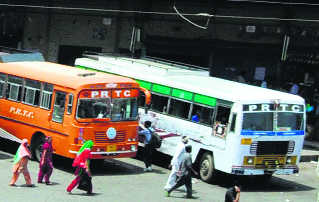 A review of the permits and licences issued since 1997 has revealed that a majority of the illegal route extensions were okayed prior to 2011. tribune file photo
A review of the permits and licences issued since 1997 has revealed that a majority of the illegal route extensions were okayed prior to 2011. tribune file photoRajmeet Singh
Tribune News Service
Chandigarh, May 28
Congress and Akali leaders’ stakes in the transport business are apparently restricting the state government from taking a tough stand on the cancellation of about 5,000 illegal route extensions granted prior to 2011.Cancelling these extensions against 1,400 permits/licences in the wake of the Punjab and Haryana High Court order would mean stalling the operations of transport companies run by top politicians.
These companies’ buses are plying on the monopoly routes, including national highways.A review of the permits/licences issued since 1997 has revealed that a majority of the illegal route extensions had been okayed prior to 2011. It was in December 2011 that the then SAD-BJP government had tweaked the original scheme formulated in August 1990 to legalise these operations.Jasbir Singh Grewal, general secretary of the Punjab Small-Scale District Bus Operator Association, said, “The CM should talk to all bus operators’ associations so that a level playing field can be ensured in the transport business. Musclemen of private operators are still making their presence felt. A transparent time table should be prepared to end all illegal route extensions.”While the Advocate General (AG) is vetting the new transport policy, there is no word so far on the cancellation of the illegal route extensions. “The extensions struck down by the High Court should not be linked with the transport policy,” an official said. The policy is likely to be tabled before the Cabinet during its meeting on May 30.Sources in the Transport Department said a list of all permits/licences issued since 1997 had been prepared.Meanwhile, the illegal operations of integral AC coaches, running on contract carriage permits between Punjab and the Delhi airport, are also yet to be stopped.
ATTACK ON SIKHS
Sarpanch arrested in Rajasthan
Minorities panel to take up matter on June 2
Yash Goyal
Jaipur, May 28
The Rajasthan Police have so far arrested six persons, including the sarpanch of Chainpura village in Ajmer district, for allegedly thrashing and assaulting four Sikh “sewadars” last month.The Rajasthan State Commission for Minorities has summoned the victims, accused and the Ajmer SP on June 2.On the complaint of a victim, Harpal Singh of Khairtal in Alwar district, an FIR has been lodged at Nasirabad Sadar police station against six persons, ADGP (Law and Order) N Ravindra Kumar Reddy told The Tribune today.The accused, including sarpanch Ramdev Singh, were booked under Sections 295 A and 298 (hurting religious sentiments), 143, 341, 323, the ADGP said.Besides the sarpanch, others who have been arrested are Shravan Singh Rawat, Raju Singh Rawat, Bhanwar Singh Rawat, Manna Singh Rawat, and Vijay Singh Rawat.State Minorities Commission Chairman Jasbeer Singh said he had summoned all parties for personal appearance on June 2. The commission would probe the case independently and submit its report to the Centre and the Chief Minister at the earliest, Singh said.Flaying the incident, state Congress vice-president Dr Archna Sharma alleged that the minorities were not safe in BJP-ruled states. “In the video, the police were seen standing as mute spectators when the sewadars were being beaten up by upper caste people,” she alleged. Punjab CM Capt Amarinder Singh yesterday spoke to his Rajasthan counterpart Vasundhara Raje demanding strict action against those involved in the incident.
Mistaken identity?
- Four sewadars of a gurdwara were thrashed by members of the Rawat community at Chainpura village in Ajmer district of Rajasthan on April 24 where they had gone to seek donations. They were mistaken as thieves or kidnappers. A video of the incident had gone viral on social media on May 25.
Sangrur takes lead in closing liquor vends
Parvesh Sharma
Tribune News Service
Sangrur, May 28
Like last year, the district again leads in closing liquor vends in villages this time. In all, 21 liquor vends have been closed in as many villages of the district.The movement against liquor was started from Sangrur by several NGOs in 2009. Since then, the district has been leading every year in closing liquor vends.The NGOs today announced to intensify their campaign against liquor.“Last year, 34 liquor vends were closed in the district. The decline in number does not mean that panchayats are losing interest in the campaign, but the success rate of resolutions. Last year, 53 resolutions were passed against liquor vends while, this year, 22 resolutions were passed – 21 for closing vends and one for shifting a vend. All were accepted,” said AS Mann, president, Scientific Awareness and Social Welfare Forum (SASWF).Members of the SASWF, Red Cross De-Addiction Centre, Sangrur, and Samaj Bhalai Manch, Sherpur, have been visiting several villages of the district and organising seminars to spread awareness about the rights of panchayats to pass resolutions against liquor vends. To date, NGOs have organised 107 seminars in several villages.Since 2009, panchayats in the district have passed 371 resolutions against liquor vends. The state excise authorities have received 908 resolutions from across the state. In all, 493 vends have been closed to date, out of which 158 have been from Sangrur district.Mohan Sharma, Director of a local Red Cross De-addiction Centre, said: “We are receiving youths addicted to alcohol. Liquor contractors are selling alcohol to even minors, which is against norms. Our efforts have started paying as panchayats have started fighting against the liquor mafia.”Sangrur Congress MLA Vijay Inder Singla has been honoring panchayats fighting against liquor vends. “We have been helping panchayats to root out the menace alcohol addiction,” he said.
In ‘low spirits’ With 21 liquor vends closed in Sangrur district this year, it leads the state on this front. It is followed by Patiala (15) and Barnala (9). Next on the list are Hoshiarpur, Bathinda and Mohali, where four vends each have been closed. Three vends each have been closed in Ropar, Ferozepur and Pathankot; two each in Jalandhar, Moga, Ludhiana and Amritsar; and one each in Fatehgarh Sahib, Faridkot, Kapurthala and Gurdaspur.
Former CM in no mood to put his feet up
Tours Lambi to express condolences over deaths
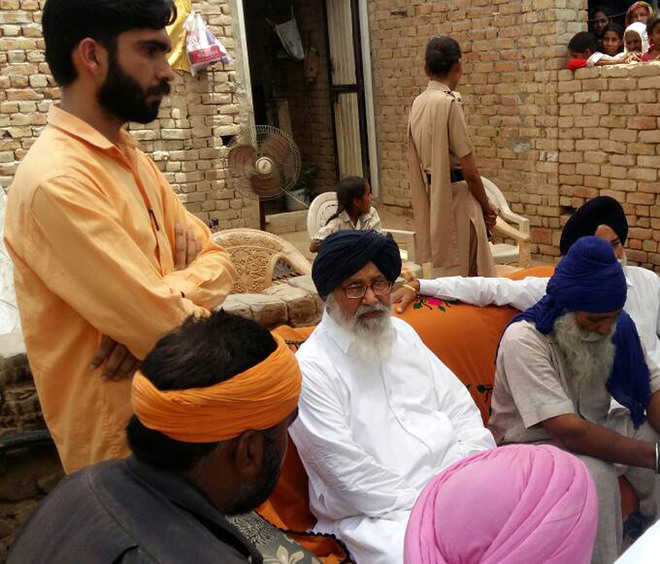 Parkash Singh Badal at the residence of a labourer in Lambi constituency in Muktsar on Sunday. Tribune photo
Parkash Singh Badal at the residence of a labourer in Lambi constituency in Muktsar on Sunday. Tribune photoArchit Watts
Tribune News Service
Lambi, May 28
In spite of temperature hovering around 45 degree Celsius, former Chief Minister Parkash Singh Badal (89) toured his home constituency Lambi today.He visited 18 families in four villages to express condolences at the death of their relatives.He visited two houses at Lohara village, one at Warring Khera, five at Ghumiara and 10 at Vanwala village. Most of the houses he visited were of poor and Dalit families.Badal said, “I am not doing any favour to these people. This is the duty of every elected representative to meet people of his area. I spend three hours every day to meet people, poor or rich. A politician sometimes is unable to attend weddings because of his busy schedule, but it is his duty to visit everyone in times of grief.”He criticised Chief Minister Capt Amarinder Singh for being unapproachable. “He doesn’t meet anyone.”On Shiromani Akali Dal’s policy to target the Congress government, Badal said, “Everyone knows the Congress will not fulfil the promises announced in its election manifesto. But we are giving the government time to perform. When it fails to fulfil the promises, we will target them.”The former Chief Minister sought the resignation of Power Minister Rana Gurjit Singh, whose cook Amit Bahadur bagged �a Rs 26-crore sand �mining contract.“The minister should have resigned. The question is from where he got such a big amount. Even the rich don’t have such a big amount,” Badal added.
Order ignored, HC for officer’s presence
Saurabh Malik
Tribune News Service
Chandigarh, May 28
The Punjab and Haryana High Court has told the then Principal Secretary KJS Cheema to be present before the Bench to explain the non-compliance of an order passed in the functioning of Centre for Training and Employment of Punjab Youth (C-PYTE).The direction by Justice Augustine George Masih came on a contempt petition filed against Cheema and another respondent by Lajpat Singh Bains.Taking up the plea in January, the Bench had observed that an affidavit dated March 17, 2015, filed by Cheema in the matter was, prima facie, contrary to findings recorded in the “vigilance inquiry report”.“It appears that there is a deliberate attempt to shield the ex-Director General, C-PYTE.
Let the officer concerned explain the observation,” the court observed.As the case came up for hearing, the counsel for the state submitted that he had not received instructions despite communication of the order passed by the court. He also prayed for time to comply with the order. Justice Masih granted time for the purpose.The HC had in September 2012 directed the government to refer the matter to the Vigilance Department for an investigation. The direction came on a petition filed by Bains for a probe into the functioning of C-PYTE.T
the department was asked to look into the recruitment made by C-PYTE after the issuance of an advertisement on January 31, 2010.The directions came after a short affidavit was filed by Department of Employment Generation and Training under secretary, stating that an inquiry was conducted by the Department of Welfare of Scheduled Castes and Backward Classes against a member of the selection committee. “In the preliminary inquiry, the respondent was found guilty of omission and commission at the time when the recruitment was made,” the affidavit said.
VB detects irregularities in repair at Harike headworks
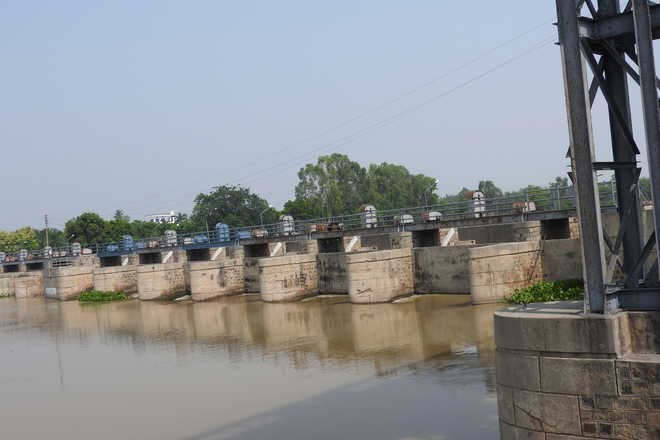 The probe indicates misappropriation of funds sanctioned for desilting of the 55,000-ft-long canal.Tribune file photo
The probe indicates misappropriation of funds sanctioned for desilting of the 55,000-ft-long canal.Tribune file photoSanjeev Singh Bariana
Tribune News Service
Chandigarh, May 28
A Vigilance probe has found illegal allotment and irregularities in the execution of projects regarding the repair of Harike headworks and mining in the area.Sources said the probe indicated misappropriation of funds sanctioned for desilting of the 55,000-ft-long canal from Gurditiwala head to Balewala head. Also under probe were repair of Harike headworks and filling of hollow spaces in Ferozepur feeder canal.A probe report has been submitted to the VB headquarters by SSP Vigilance (Jalandhar) Daljinder Singh Dhillon, who was assisted by Ravinder Kumar Bakshi, SSP Vigilance (Amritsar), in the investigation.Refusing to divulge probe details before a formal announcement by the VB, a senior officer said: “We have submitted a detailed report. Findings confirm large-scale illegalities in the irrigation works in the area.”The officer said a noticeable fall in the collection of sand mining after the probe started in March confirmed that several projects in earlier mining activity were illegal.Following up the lead of no mining records in several dispatch registers, the bureau established that payments were being made against wrong estimates. There was a big difference in the project estimates and the actual payments. The figures of actual payments made were found higher than the estimated figures.The repair of Harike headworks was necessitated as almost 1,200 cusecs of water was wasted on account of leakage, official figures said. In the past 13 years, the headworks had never been closed for repair. Of the 31 gates at Harike, 14 are not operational. Other gates, too, needed repair.At present, the headworks is closed for repair. The canal system, built in 1958, demanded regular repair and desilting and there had been a delay this time, the sources said.
Aujla meets martyr’s family
Aujla meets martyr’s family
MP Gurjeet Singh Aujla (right) at the residence of martyr Lakhwinder Singh in Helar village on Sunday. Tribune photo
Tribune News Service
Amritsar, May 28
MP Gurjeet Singh Aujla today met the family of martyr constable Lakhwinder Singh of 31st battalion CRPF at Helar village. Lakhwinder was part of the massive counterinsurgency operation against Naxals in Chattisgarh a few years ago. Several Maoist leaders were killed in that operation.
Lakhwinder’s bravery in this operation earned him President’s Police Gallantry Medal posthumously. He is survived by his wife and two kids.
His younger brother constable Gurdev Singh served in the 24 Punjab regiment. He was a part of anti-militancy operation in the Uri sector in 2004. He was awarded President’s Sena Medal in 2004. After the death of Lakhwinder, Gurdev contacted the MLA of the constituency and requested for a local job so that he may stay close to his family. After getting the nod, he resigned from the Army in 2013, but later, he didn’t get a positive response from the MLA, so he joined the Defence Security Corps in 2014. Gurdev has urged Aujla to arrange a job for the children of Lakhwinder. Aujla said he would take up the issue with the Chief Minister.
2 PAP officers appointed as SHOs against norms
Gagandeep Sharma
Bathinda, May 27
Two inspectors of Bathinda police, Davinder Singh and Kulwinder Singh, have been appointed as law and order officers. Both of them belong to the Punjab Armed Police and have been serving as SHO in the Kotwali and the Canal Colony police stations, respectively.As per the norms, an inspector or a sub-inspector cannot serve as a Station House Officer in any police district. A law and order officer has not been appointed in any of the 18 police stations of Bathinda district.SSP Naveen Singla has appointed Majer Singh and Prabhjot Kaur as Station House Officers of the Kotwali and Canal Colony police station, respectively, but only for paper works.Davinder Singh was appointed as the law and order officer in April and Kulwinder Singh was appointed at the post earlier this week.However, a letter released by the then DGP’s office on August 18, 2009, stated that armed battalions and districts police have different cadre up to the rank of sub-inspector under the Punjab Police Act 2007.As per the order, an inspector and a sub-inspector cannot occupy the post of SHO, Additional SHO, investigative officer etc. Also, they are not eligible to be posted in specialised units, such as the CIA, Economic Offences Wing, PO Staff, Anti-Gunda Staff etc.They can only be eligible for the post of District Armed Reserves and under various heads in the police lines.When contacted, Bathinda SSP Navin Singla said Davinder Singh and Kulwinder Singh were experienced officers. They had been shifted to the district police to take the benefit of their expertise.











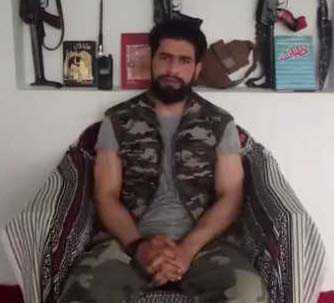

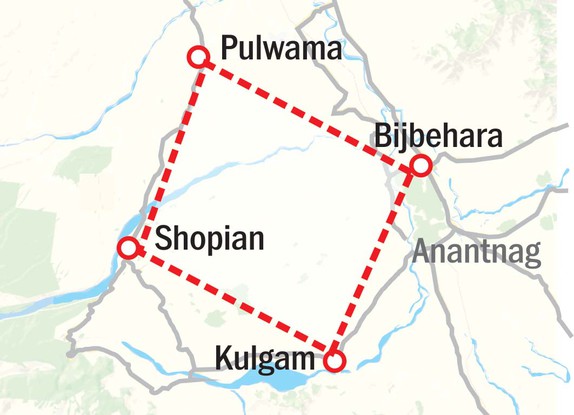




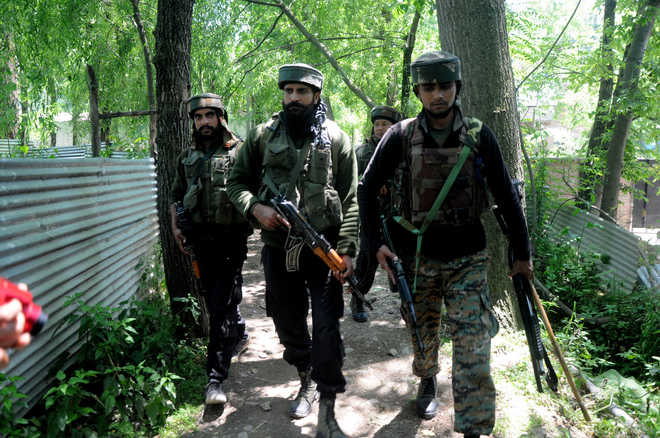









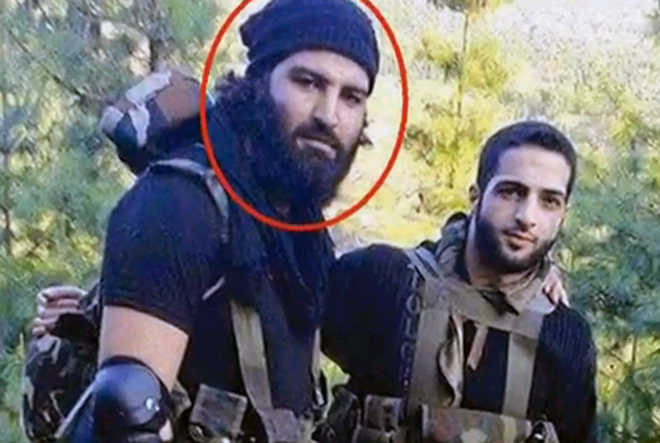
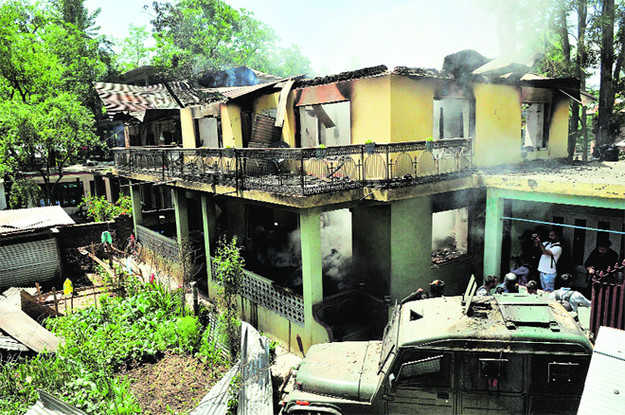

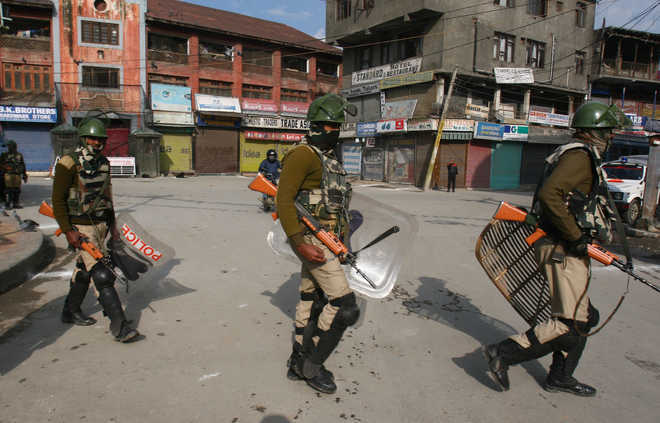



























































Red Corridor forces have mostly suffered when they encounter large groups of insurgents.
Analysing a tragedy for whatever reasons must begin with an expression of regret.
That’s exactly how I look at the situation where the nation has been left frustrated yet again with a heavy loss in the security domain.
Losing 25 police personnel in circumstances much like in the past inspires little confidence in the ability of Central armed police forces and of the intelligence agencies that support them in the Red Corridor.
Amid all the patriotic fervor that accompanies the loss of uniformed personnel, the public also deserves to know why this happens so often. While doing so the colour of the uniform one has worn must not be evident; only then will justice be done. To make this into an “us versus them” affair within the uniformed services would be inherently unfair.
Even as I write an encounter is in progress in Kupwara where the Army has suffered losses. Such losses in the administrative realm, of camps and perhaps convoys, doesn’t absolve the Army and Central forces in Kashmir from the many blunders which have occurred in the recent past.
Sukma is nothing short of a tragedy. I insist on calling it that since innocent policemen doing their job and being martyred as they were not trained adequately to do that job is indeed a tragedy.
Citing former US defence secretary Donald Rumsfield, the phrase “known knowns” is most applicable here. Almost everything which goes into making such a repeated tragedy is a “known” in terms of past analyses, and we are fully aware that it is a “known”. There are some “knowns” that can’t and won’t change unless transformational decisions are taken, but it’s important to keep the public informed.
The Central Reserve Police Force has been delineated as the core or lead force to take charge of counter-insurgency operations (CI ops) across the country. Was this Union Cabinet decision, based on the recommendations of the Kargil Review Committee and Group of Ministers, correct? Is it something that should be reviewed?
Analysts are far happier quoting the decision than questioning its wisdom, or the absence of implementation. When such decisions are taken, they should be based on the capability of a force or its potential. If the latter, then the means to acquire that capability must also be delineated and orders issued. By merely recommending the CRPF as the lead force for CI ops without examining its structure, manning pattern and command and control, the Kargil Review Committee perhaps erred substantially. However, the purpose is not to assign blame; a decade and a half down the road experience itself would have repeatedly shown that in its current format and makeup it is unfair to give the CRPF such a responsibility. The “known knowns” of the force mentioned by every analyst in the past three days needs a brief recount. Chasing nimble tribal guerrillas armed to the teeth who are fighting a “son of the soil” insurgency in a terrain they know like the back of their palms isn’t really a joke.
CRPF jawans are often 50-60 years old as the retirement age in the force is 60. It will be unfair to question it as I am unaware if the force has laid down an age limit for deployment of personnel in the Red Corridor. If not, then it is essential, and units must be restructured as Red Corridor units.
The Army’s Rashtriya Rifles is a fine model of a CI force to examine and improve upon.
The manning pattern, under which senior CRPF positions are occupied by Indian Police Service officers is too flogged an issue to repeat. The point to emphasise is that institutional awareness of weaknesses in the operational realm can’t be expected from a hierarchy completely inexperienced in training, planning or execution of such operations anytime in their service. To be parachuted into one or more star ranks and suddenly bearing operational responsibility and the lives of so many personnel under care is inherently unfair both on the IPS officers and the CRPF.
Harping on this is like begging the question, as nothing is likely to change. It is best to work around it and look at other ways of potential optimisation. Leadership, training and equipment are the three areas which need to be reviewed, other than the senior leadership question.
Most fighting entities will inform you that the best welfare for warriors is to ensure they are fully enabled in their quest to inflict maximum casualties on the adversary, and prevent casualties unto themselves. This is best done through training and professional stocktaking.
Some Red Corridor forces like the Andhra Pradesh Greyhounds have proved their capability beyond doubt, but such excellence is a drop in the ocean compared to the magnitude of the problem.
The Army’s Para SF units, particularly the ones that have operated in Sri Lanka and the Northeast, have institutional experience and strength. There are enough veteran officers and men who could be tapped professionally to impart their knowledge.
Institutions like the National Police Academy are centres of excellence which must be involved in analysis and lesson-learning in a substantive way. The plethora of experience that the CRPF and state police forces possess is itself not little.
The circumstances surrounding the Sukma event, however, do not inspire any confidence on the basics that those involved in such operations must have. Everything here is supposed to be tactical, including having meals.
Troops deployed on operations do not eat at the same time, and not without establishing security through observation posts, sentries and the like. There is obviously a real need to return to the basics, and to do so repeatedly.
Red Corridor forces have mostly suffered when they encounter large groups of insurgents.
Obviously, one of the banes of such operations is contact-based command and control and getting the sub-unit to respond beyond just returning fire. I am not sure whether training on this is ever carried out. CRPF units are most usedly to platoon-based functioning. Even the best Army units may find it difficult to have a full company-based response in the face of such situations. The fact that a full company can come under enemy action at a single time is itself a reflection of questionable field tactics. If this is to improve, egos must be shed. Smaller teams can train with Greyhounds and other successful police outfits, but if a full sub-unit response is necessary, it should imbibe the Army’s functional culture.
The immediate upgrading of equipment is vital. The Union home ministry has a very efficient procurement machinery. It must look at rotary aviation resources for recce and response. The Mine-Protected Vehicle is an imperative, and funds can’t be the reason for not provisioning this.
While the intelligence services have secured India quite well over the last many years, tactical-level intelligence in the Red Corridor still seems to be highly questionable.
I laud the BSF’s concept of G sections of its units. In all my experience, I have not found more competent intelligence personnel at the tactical level.
This is something that the CRPF should examine closely.
The writer, a retired lieutenant-general, is a former commander of the Srinagar-based 15 Corps. He is also associated with the Vivekananda International Foundation and the Institute of Peace and Conflict Studies.